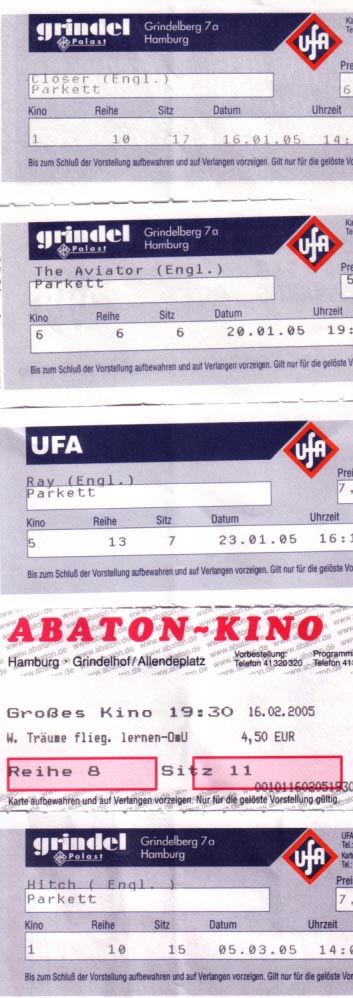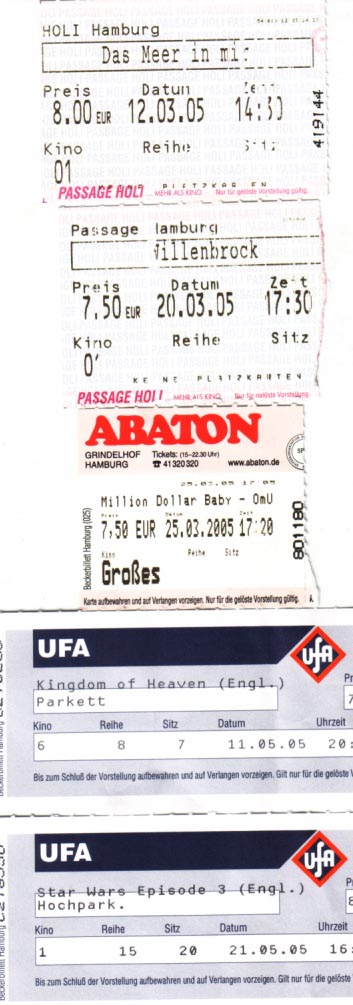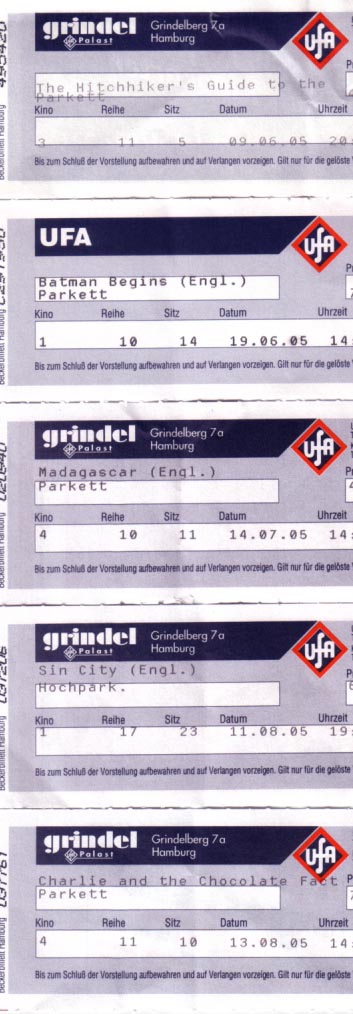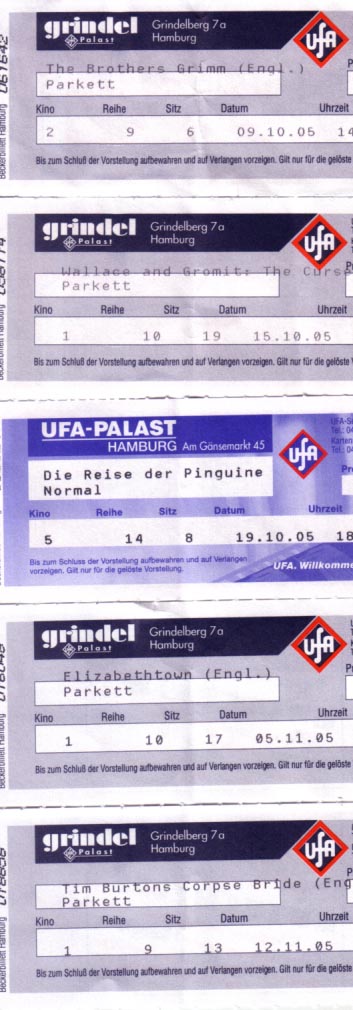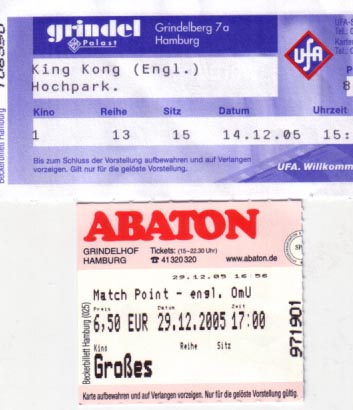Autor Edward Jay Epstein schreibt auf Slate über die „Popcorn Palace Economy“ – warum Kinobetreiber in den USA es gerne sehen, wenn Filme nicht länger als 128 Minuten dauern und warum Leute, denen die Filmlampe zu dunkel ist (weil die Kinobetreiber sie aus Geldnöten nicht rechtszeitig wechseln), an den Verkaufsständen im Foyer rumlungern könnten.
This (selling popcorn and soda) is an extremely profitable operation in which the theaters do not split the proceeds with the studios (as they do with ticket sales). Popcorn, for example, because of the immense amount of popped bulk produced from a relatively small amount of kernels – the ratio is as high as 60:1 – yields more than 90 cents of profit on every dollar of popcorn sold. It also serves to make customers thirsty for sodas, another high-margin product (supplied to most theater chains by Coca-Cola, which makes lucrative deals with theater owners in return for their exclusive “pouring” of its products). One theater chain executive went so far as to describe the cup holder mounted on each seat, which allows customers to park their soda while returning to the concession stand for more popcorn, as “the most important technological innovation since sound.” He also credited the extra salt added into the buttery topping on popcorn as the “secret” to extending the popcorn-soda-popcorn cycle throughout the movie. For this type of business, theater owners don’t benefit from movies with gripping or complex plots, since that would keep potential popcorn customers in their seats. “We are really in the business of people moving,” Thomas W. Stephenson Jr., who then headed Hollywood Theaters, told me. “The more people we move past the popcorn, the more money we make.”
Epstein ist der Autor von The Big Picture: Money and Power in Hollywood, dessen erstes Kapitel man hier lesen kann. Eine schöne Reise in die Vergangenheit. In diesem Zusammenhang empfehle ich mal wieder turnusmäßig Movie-Made America. Geht immer.
January 5th, 2006
Autor Thane Rosenbaum schreibt in Forward einen sehr guten Artikel darüber, warum Buchverfilmungen meist das Echo „Aber das Buch war besser“ hervorrufen und warum das ziemlich überflüssig ist. Besonders ein Satz hat mir gefallen: „(…) the novelist surrenders his book to his readers.“ Was bedeutet: Beim Lesen kann sich jeder die Bilder dazudenken, die er gerne hätte oder die er eben aus den Zeilen herausliest. Im Kino ist es die Kunst des Regisseurs, genau das zu verhindern; ein Film bzw. dessen Bilder wird/werden von jedem gleich rezipiert. Was man dann aus den Bildern an Bedeutung herausliest, bleibt allerdings wieder jedem selbst überlassen. Weswegen ich persönlich sowohl Bücher als auch Filme liebe – jedes Medium auf seine ganz eigene Weise.
Giving art a second life sometimes creates more of a mutant than a clone. This explains the natural impulse to preserve the story in its original form. Any adaptation results in something new, and thereby false when compared with the original.
Yet, the film version may offer its own virtues. Indeed, many films have outshone the books that inspired them. The Godfather and Gone With the Wind come to mind. The fact is, novels and films are entirely different storytelling experiences. When it comes to making a movie based on a book – or ultimately watching that movie – being too invested in the integrity of the novel is probably a bad idea.
A film adaptation that is deemed “faithful” to the novel is not necessarily a compliment. The most successful adaptations have actually been adulterous: Liberties are taken; all kinds of cheating ensues. The artistic license enables great leaps of improvisation. There are redesigned endings, compressed time periods and newly invented characters, and often an entirely different storytelling mechanism. Anyone who read The English Patient before having seen the Academy Award-winning movie remembers shaking his head, imagining how in the world Michael Ondaatje’s superbly interior novel could ever sparkle so majestically on the silver screen.
(Link via Arts & Letters Daily)
January 4th, 2006
Ich weiß, ich weiß, es ist so Verbotene Liebe, aber ab und zu mit einem Schaumgebirge aus Hollywood in der Wanne zu liegen und dazu Sekt zu schlürfen, ist einfach nett. Vor allem, wenn man vorher ein Stündchen auf dem Laufband war und den Sekt aus Nachtmann-Gläsern genießt, die man sich selbst zu Weihnachten geschenkt hat.
Wenn ich in der Wanne ein bisschen Geräuschkulisse haben will, wird es meistens Klassik Radio (trotz des Deppenbindestrichs und der belanglosen Wortjingles per Julia-Roberts-Synchronstimme), weil der Sender am wenigstens weh tut und ich vor allem lustiges Soundtrackraten machen kann. Denn Klassik Radio verkauft die orchestrale Begleitung zu Filmen eben gerne als – genau – Klassik, sagt aber nie, was man gerade gehört hat (dafür steht die Playlist online). Soll mir recht sein. Danny Elfman erkenne ich immer. James Newton-Howard verwechsele ich allerdings gerne mit John Williams.
January 4th, 2006
“i did what lovers of married men have done for centuries: i believed that he’d leave her, eventually, he just needed time. and things between us were great, really, intense and clichéd, but great. meetings in expensive hotels. phone calls worth thousands of euro. rituals. mix cds. i was so blinded by it all, that i even stayed at the family home when his wife and kid were travelling. one day, it would all be fine, i thought.
one day however, after four months of bliss, of living the grande thing, it all fell apart.
his other lover had found my weblog and my flickr stream. no, not his wife. his other lover.”
January 3rd, 2006
Das ist doch mal eine interessante Nominierung. Obwohl ich es als keine Schande ansehen würde, gegen Sahneschnitte van der Vaart haushoch zu verlieren.
January 3rd, 2006
Merke: drei Knoblauchzehen auf drei Esslöffel Miracle Whip (vulgo: Aioli für Faule Arme) sind zuviel. Ich putz mir seit zwei Tagen alle drei Stunden die Zähne.
Aber lecker war’s.
January 3rd, 2006
